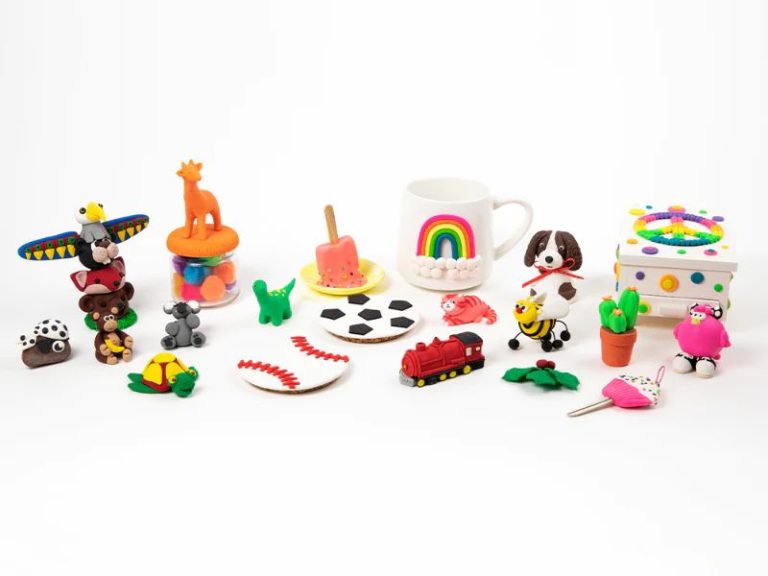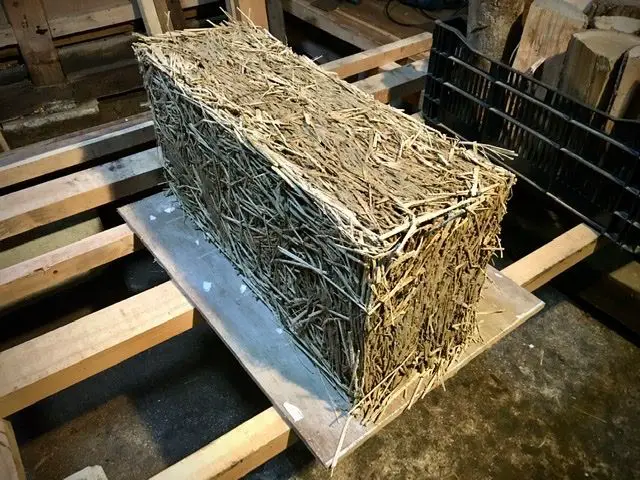How Do You Make An Earthen Vessel?
Earthen vessels are pottery made from clay and fired at high temperatures to harden and set the clay. Humans have been making earthen vessels for thousands of years, dating back to ancient civilizations. The term refers to any clay object formed into a utilitarian shape like cups, bowls, pots, jars, and vases.
Making earthen vessels involves choosing and preparing the clay, shaping it into the desired form, allowing time to dry, decorating if desired, and firing at high heat to harden and set the clay permanently. It’s an ancient craft that allows you to create beautiful, functional pottery unique to your own style and artistic vision.
Crafting your own earthen vessels can be a rewarding hobby or even a business. The process allows for immense creativity and self-expression through the shaping process. Firing the vessels yourself gives you greater control and customization options compared to purchasing mass-produced pottery. The finished vessels can make wonderful gifts, home decor items, or kitchenware you’ll be proud to use every day.
Choosing Your Clay
There are several types of clay that can be used to make earthen vessels, each with their own unique properties. The three main types are earthenware, stoneware and porcelain.
Earthenware is the most basic type of clay. It has a coarse texture and is porous when fired. Earthenware fires at lower temperatures, making it easy to work with. It is suitable for handbuilding techniques. The clay can be dug from the ground or purchased as natural clay.
Stoneware clay has fine particles that create a smooth, watertight surface when fired. It is less porous than earthenware and resistant to liquids. Stoneware fires at high temperatures around 2,200°F to 2,300°F. It can be purchased as a prepared clay.
Porcelain clay is highly refined and smooth with very fine particles. It fires at extremely high temperatures up to 2,500°F. Porcelain clay produces delicate, translucent vessels that are watertight. It can be purchased premixed and is harder to locate naturally.
The amount of clay needed depends on the size of the vessel you want to make. For a small jar or vase, you may need 1-2 pounds of clay. Larger vessels may require 5 pounds or more. It’s better to have extra clay than not enough. Prepare extra clay balls while wedging so you can add more if needed.
Preparing the Clay
Kneading and wedging the clay is a crucial step in preparing it to be shaped into a vessel. Start by kneading the clay on a flat surface to warm it up and make it more malleable. Use the palms of your hands to push the clay down and away from you, folding it over itself repeatedly. This helps distribute moisture evenly throughout the clay.
After kneading, the next step is wedging. This involves cutting the clay in half, standing each half on its side, and pushing them into each other. Keep repeating this process, cutting and pushing the clay together. Wedging helps align the clay particles and remove any air pockets or impurities lodged in the clay. Air pockets can cause cracking or even explosions from trapped steam during firing. It’s important to be thorough in wedging to remove any hidden air pockets. The clay is now ready for shaping after all the kneading and wedging.
Shaping the Clay
There are several methods available for shaping clay into an earthen vessel. The most common techniques are:
Pinching – Pinching is one of the most basic ways to shape clay. Take a ball of clay in your hands and literally pinch and pull the clay into the desired shape. Pinch pots tend to have a rounder, smoother shape with thinner walls.
Coiling – With the coiling method, you roll out snakes or coils of clay and stack them on top of each other in a spiral pattern. Coiling allows you to gradually build up thicker, uneven shaped vessels.
Slab Building – Slab building involves rolling out flat slabs or sheets of clay and combining them to form a box shape. The slabs can be cut into shapes and joined together with slip. Slab built vessels often have straight sides and flat bases.
Using a Potter’s Wheel – A potter’s wheel allows you to center and raise clay as it spins. It takes practice, but with a wheel you can make perfectly symmetrical rounded shapes and vessels with thinner walls. Beginners may start with simple cylinder forms before attempting more complex curved and multi-layered vessels.
The shaping technique you choose will depend on your desired shape, texture, and thickness of the finished earthenware vessel. Simple shapes like pinch pots are great for beginners, while more complex formations typically require an experienced hand at the wheel or utilizing other advanced methods.
Drying the Clay
After the vessel has been shaped, it needs time to dry slowly and evenly to avoid cracks before firing. Allow at least a few days for air drying, though drying time can vary based on factors like climate, thickness, and size. Avoid quick drying which causes cracks.
Use a drying rack to hold the vessel while drying. Leaving the vessel on a flat surface can lead to uneven drying and warping. The rack allows air circulation all around the piece so moisture can evaporate slowly from all sides.
Check the vessel regularly as it dries. Look for any cracks starting and mist the exterior with water to slow drying if needed. Don’t let any sections get bone dry while other areas are still moist. Keep the drying even and gradual to prevent stresses that lead to cracks and breakage.
Decorating
There are many creative ways to decorate an earthen vessel. Some popular options include:
Incising – Using sharp tools to cut lines and patterns into the surface of the leather-hard clay. This creates indented designs when dry.
Stamping – Pressing carved stamps into the surface of the clay to leave imprinted patterns and shapes.
Painting – Applying colored pigments onto the clay surface with brushes. Traditional pigments are made from natural materials like clays, minerals, and plants.
Some creative painting techniques include:
- Using feather tips or chewed sticks as paint brushes
- Finger painting to create smears and smudges
- Stenciling with cut-out shapes
- Dabbing with a sponge
Paint can be applied before or after firing. Natural pigments like ochre clays and iron oxides can be beautiful when blended. The options for decoration are limited only by the artisan’s creativity and imagination.
Firing the Vessel
Once your earthen vessel has dried completely, it is ready for the first firing, known as the bisque firing. This initial firing process serves to harden the clay body and make the vessel less porous. There are two main methods for bisque firing an earthen vessel – using an electric or gas-fired kiln, or pit firing.
Kiln firing allows for precise temperature control and uniform heating. Make sure the kiln is capable of reaching the proper temperature for your clay body, usually around cone 04-06 which is approximately 1652-1808°F. Slowly raise the temperature over several hours, holding at three different plateaus to allow steam and gasses to fully vent before reaching the peak temperature. Soak at the peak temperature for 1-2 hours before slowly cooling the kiln.
Pit firing involves digging a large hole and building a fire inside to create the heat needed to fire clay. This more primitive process is less controllable but can create beautiful effects on the surface. Construct a stack of dried wood, kindling, and other organic materials. Place the vessels to be fired around and amongst the fuel. Light the fire from the bottom, feeding and stoking over 12-48 hours to allow the pieces to fully fire before cooling.
Regardless of the firing method, it’s critical to bring the clay slowly to the optimal temperature for vitrification based on the clay body. Firing too quickly can cause cracks or explosions. Once fired, the vessel will be ready for decorating and glazing before the final firing.
Applying a Glaze
Glazing an earthen vessel helps make it non-porous, as well as enhances its beauty. Glazes are made from a mixture of silica, fluxes, and stabilizers that melt and fuse to the clay body during firing. Common ingredients include feldspar, kaolin, quartz, dolomite, and colorants such as metal oxides.
There are many recipes for ceramic glazes, but some basic ones include:
- A simple glaze with 4 parts feldspar, 2 parts kaolin, 1 part quartz.
- A mid-range glaze with 4 parts potash feldspar, 3 parts silica, 2 parts kaolin, 1 part whiting.
- A high-fire stoneware glaze with 1 part dolomite, 2 parts potash feldspar, 3 parts silica, 1 part kaolin.
Glazes can be applied using different techniques:
- Slip trailing – Using a nozzle to drizzle liquid glaze onto the piece to create patterns.
- Dipping – Submerging the entire piece into a bucket of glaze.
- Pouring – Carefully pouring glaze over the piece.
Most glazes require two firings – a bisque firing to harden and prepare the clay, followed by a glaze firing to melt and fuse the glaze. The glaze firing is typically around 2,100°F depending on the glaze ingredients and type of clay body used.
Final Firing
The final firing process is crucial for finishing your earthen vessel and locking in the decorative glaze. When applying glazes, it’s important to achieve an even coating of the proper thickness, around 1/8th of an inch. Thicker glaze layers may bubble or crack. For firing, electric kilns allow precise control of heating and cooling cycles. Use a multistage program, steadily ramping up to your glaze’s specified cone temperature – often between 2100-2300°F – holding for 15-60 minutes, then shutting off the kiln to cool gradually. Don’t force-cool the vessel or open the kiln prematurely. The final cooling stage can take 8 hours or more as the glaze hardens and seals the clay body.
With proper preparation, glazing, and firing technique, you can produce a beautiful handcrafted earthen vessel with your preferred decorative colors and surface effects. The final fired vessel will be fully vitrified with a non-porous glazed surface, ready for use or display.
Conclusion
Making an earthen vessel takes time, patience, and practice. Reviewing the process from choosing and preparing the clay to decorating, firing, and glazing gives an appreciation for the skill and care needed at each step. For beginners, start with small, simple projects and don’t get discouraged if the results aren’t perfect right away. Making pottery is a rewarding craft that develops over time. Let the finished vessels inspire ideas for the next creation, whether elaborating on the shape, texture, color, or firing technique. Most importantly, enjoy the creative process and the satisfaction of shaping usable, handmade objects from humble clay.


